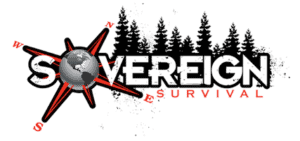In the face of unforeseen disasters, having the right nutrition can be a game-changer. While mylar-packed bags and freeze-dried foods are excellent choices, they can be expensive. This video highlights ten essential foods that are not only affordable but also have a long shelf life and are packed with nutrition.
These foods are readily available in most stores and might be missing from your emergency pantry.
- Rice: Topping the list is white rice. Known for its long shelf life, rice is an excellent source of carbohydrates. It’s versatile and can be the base for many meals. Approximately 50% of the global population relies on rice as their primary calorie source. Given its compact form and resistance to spoilage, rice is an ideal addition to emergency supplies.
- Beans, Legumes, and Pulses: Beans are a staple in many prepping lists, with pinto beans being a popular choice. However, it’s essential to find the right bean or legume that suits you. Beans and rice together form a complete protein source. The combination of beans’ fiber and rice’s carbohydrates offers sustained energy release.
- Oats: Oats are rich in fiber and complex carbohydrates. They are easier to digest than beans and are an excellent alternative for those looking for a high-fiber food source without the digestive issues associated with beans.
- Canned Vegetables: Canned vegetables can serve as a nutritious lifeline. They retain essential nutrients over time, ensuring a steady source of vitamins and minerals.
- Peanut Butter: Peanut butter is a calorie-dense food that offers a good source of healthy fats and protein. It’s filling, requires no refrigeration, and can be consumed in various ways.
- Canned Meats: Canned meats, including chicken, beef, hash, pork, and tuna, are essential for emergency food supplies. They provide a reliable protein source with an extended shelf life.
- Powdered Milk or Milk Alternatives: For those who can’t consume regular milk, powdered milk alternatives are available. They offer a stable source of nutrients like calcium, vitamin D, and protein.
- Powdered Drinks: Ranging from sugary options to those enriched with vitamins and electrolytes, powdered drinks are a quick source of basic nutrition.
- Protein Powders: Developed in the mid-20th century for athletes and bodybuilders, protein powders provide essential protein and nutrients. Here is our recommended protein powders.
- Vegetable Powders: Vegetable powders emerge as a valuable resource, especially after disasters. Their versatility, nutritional density, and extended shelf life make them indispensable.
Incorporating these ten foods into your daily diet is crucial. You don’t want to wait until after a disaster to introduce them to your system. Any sudden change can shock your system, potentially causing gastronomical distress, which can hinder your survival and recovery efforts. If you had just a pound of each of these ten items, you’d have between 12,000 to 15,000 calories. Most of these foods are affordable; rice is slightly over a dollar per pound, canned vegetables can be found for less than a dollar, and dry beans and legumes can be purchased in bulk at low prices.
Conclusion: These ten foods should be staples in both your emergency pantry and your daily diet. They offer the best value for money and ensure you have the vital nutrients necessary to navigate the aftermath of any disaster. For more insights, check out City Prepping’s video on the enemies of long-term food storage and almost immortal foods. This will equip you with everything you need to cover all bases for your emergency food supply.
Remember, preparation is key. Stay safe and ensure you’re well-equipped for any unforeseen challenges.
